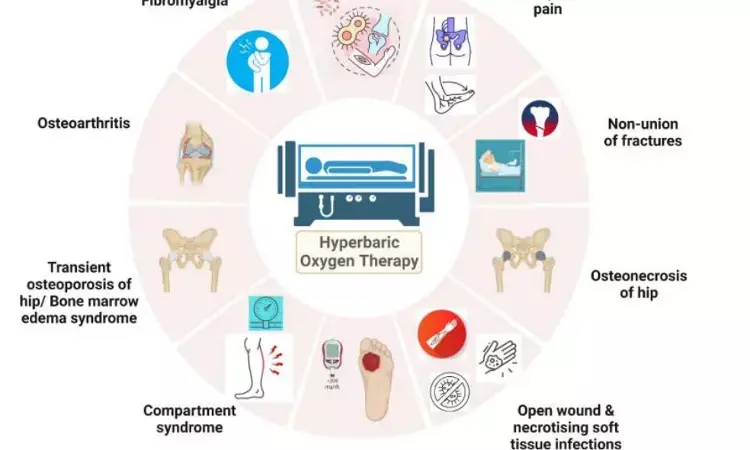- Home
- Medical news & Guidelines
- Anesthesiology
- Cardiology and CTVS
- Critical Care
- Dentistry
- Dermatology
- Diabetes and Endocrinology
- ENT
- Gastroenterology
- Medicine
- Nephrology
- Neurology
- Obstretics-Gynaecology
- Oncology
- Ophthalmology
- Orthopaedics
- Pediatrics-Neonatology
- Psychiatry
- Pulmonology
- Radiology
- Surgery
- Urology
- Laboratory Medicine
- Diet
- Nursing
- Paramedical
- Physiotherapy
- Health news
- Fact Check
- Bone Health Fact Check
- Brain Health Fact Check
- Cancer Related Fact Check
- Child Care Fact Check
- Dental and oral health fact check
- Diabetes and metabolic health fact check
- Diet and Nutrition Fact Check
- Eye and ENT Care Fact Check
- Fitness fact check
- Gut health fact check
- Heart health fact check
- Kidney health fact check
- Medical education fact check
- Men's health fact check
- Respiratory fact check
- Skin and hair care fact check
- Vaccine and Immunization fact check
- Women's health fact check
- AYUSH
- State News
- Andaman and Nicobar Islands
- Andhra Pradesh
- Arunachal Pradesh
- Assam
- Bihar
- Chandigarh
- Chattisgarh
- Dadra and Nagar Haveli
- Daman and Diu
- Delhi
- Goa
- Gujarat
- Haryana
- Himachal Pradesh
- Jammu & Kashmir
- Jharkhand
- Karnataka
- Kerala
- Ladakh
- Lakshadweep
- Madhya Pradesh
- Maharashtra
- Manipur
- Meghalaya
- Mizoram
- Nagaland
- Odisha
- Puducherry
- Punjab
- Rajasthan
- Sikkim
- Tamil Nadu
- Telangana
- Tripura
- Uttar Pradesh
- Uttrakhand
- West Bengal
- Medical Education
- Industry
Hyperbaric Oxygen Therapy as adjunct has emerging role in Orthopaedics

Hyperbaric oxygen therapy (HBOT) has emerged as an adjunct treatment modality in various orthopedic and rheumatological conditions. Undersea and Hyperbaric Medical Society (UHMS) defined the minimum number of HBOT cycles, dose, and frequency for various diseases. UHMS laid the 14 absolute indications for HBOT.
The article by Madhan Jeyaraman et al was published in “Indian Journal of Orthopaedics.” It deals with the mechanism of actions of HBOT and evidence of various musculoskeletal disorders where HBOT was utilized to accelerate the healing process of the diseases.
The review literature search was conducted by using PubMed, SCOPUS, and other database of medical journals for identifying, reviewing, and evaluating the published clinical trial data, research study, and review articles for the use of HBOT in musculoskeletal disorders.
Hyperbaric oxygen acts by two primary mechanisms, namely, hyperoxygenation and decreased bubble size.
The secondary mechanisms by which HBO acts are:
(a) Vasoconstriction (osteonecrosis, crush injury/compartment syndrome, and thermal burns).
(b) Neovasculogenesis (non-healing ulcers and wounds, compromised grafts and fl aps, and radiation-induced injury).
(c) Migration and proliferation of fibroblasts (non-healing ulcers and wounds and radiation-induced injury).
(d) Oxidative killing by leukocytes (refractory osteomyelitis and necrotizing soft tissue infections).
(e) Inhibition of toxins (clostridial myonecrosis).
(f) Antibiotic synergy (refractory osteomyelitis and necrotizing soft tissue infections).
(g) Reduction of intravascular leukocyte adherence (crush injury/compartment syndrome).
(h) Lipid peroxidation (CO poisoning and crush injury/ compartment syndrome).
• Various clinical researchers documented cellular and biochemical advantages of HBOT which possess allodynic effects, anti-inflammatory, and prooxygenatory effects in patients with musculoskeletal conditions.
• Studies on the usage of HBOT in avascular necrosis and wound healing provide a platform for exploring the plausible uses of HBOT in other musculoskeletal conditions.
• Literature evidence states the complications associated with HBOT therapy. Claustrophobia and middle ear barotrauma (MEB) are the two most common complications which occur during either monoplace or multiplace chamber HBOT compression.
The authors concluded that – “The available literature provides a bird’s eye view of HBOT application in various musculoskeletal disorders. The standardization and optimization need to be performed in terms of dose, frequency, number of sessions, safety, and efficacy of existing protocols of HBOT in musculoskeletal conditions. With the significant implications of HBOT, clinical applications have to be explored in the future.”
Further reading:
Hyperbaric Oxygen Therapy in Orthopaedics: An Adjunct Therapy with an Emerging Role
Madhan Jeyaraman, Abdus Sami et al
Indian Journal of Orthopaedics (2023) 57:748–761
https://doi.org/10.1007/s43465-023-00837-2
MBBS, Dip. Ortho, DNB ortho, MNAMS
Dr Supreeth D R (MBBS, Dip. Ortho, DNB ortho, MNAMS) is a practicing orthopedician with interest in medical research and publishing articles. He completed MBBS from mysore medical college, dip ortho from Trivandrum medical college and sec. DNB from Manipal Hospital, Bengaluru. He has expirence of 7years in the field of orthopedics. He has presented scientific papers & posters in various state, national and international conferences. His interest in writing articles lead the way to join medical dialogues. He can be contacted at editorial@medicaldialogues.in.
Dr Kamal Kant Kohli-MBBS, DTCD- a chest specialist with more than 30 years of practice and a flair for writing clinical articles, Dr Kamal Kant Kohli joined Medical Dialogues as a Chief Editor of Medical News. Besides writing articles, as an editor, he proofreads and verifies all the medical content published on Medical Dialogues including those coming from journals, studies,medical conferences,guidelines etc. Email: drkohli@medicaldialogues.in. Contact no. 011-43720751


